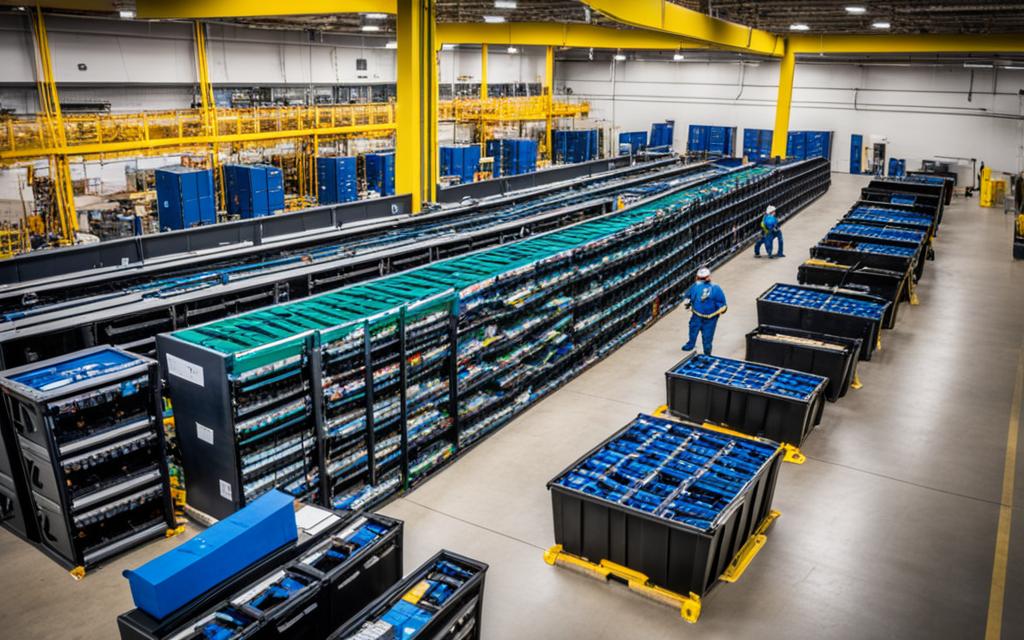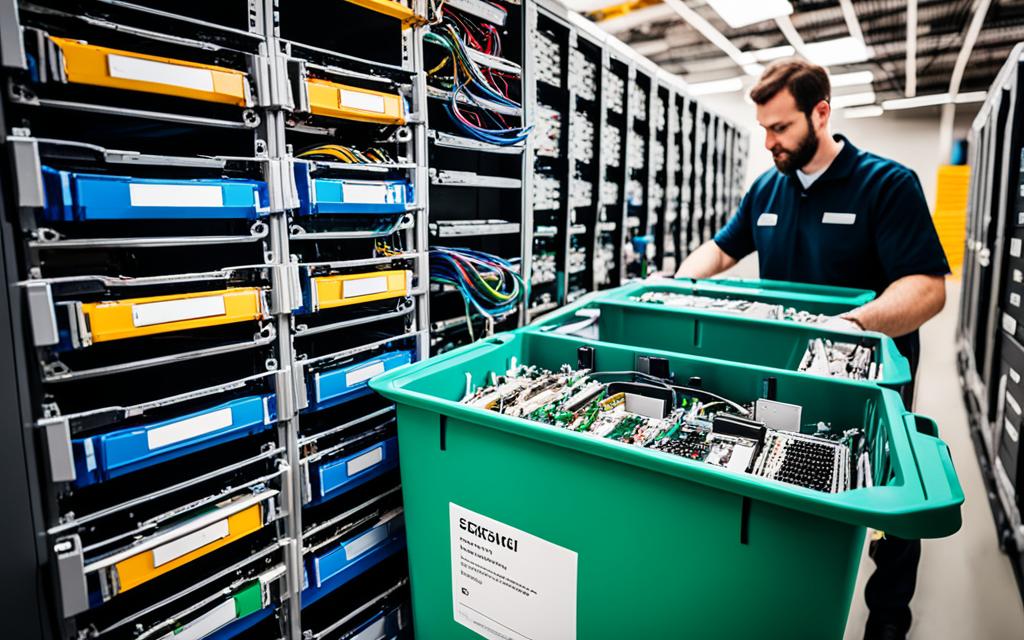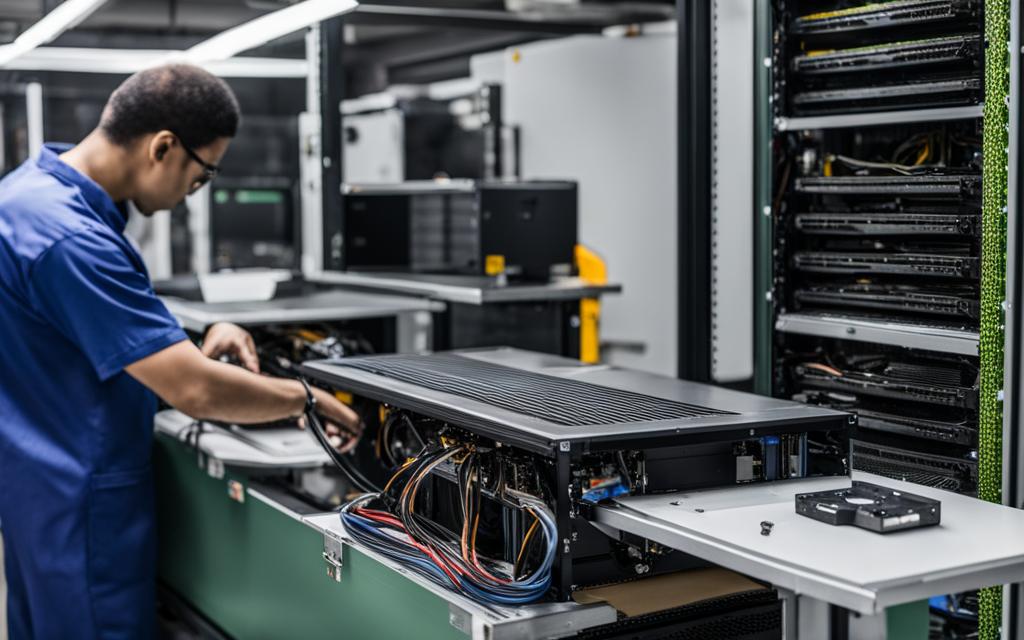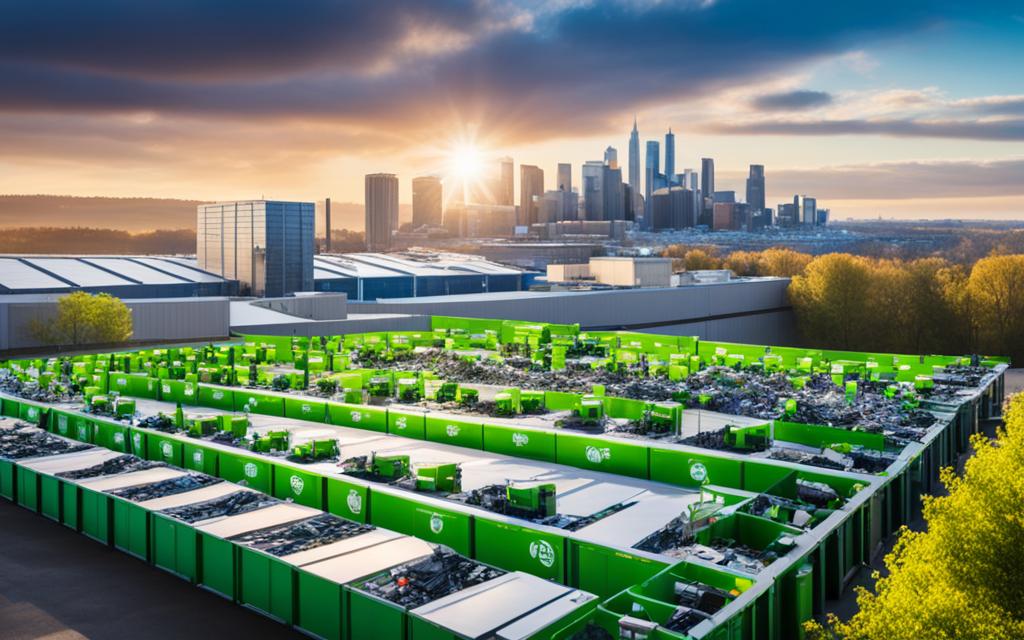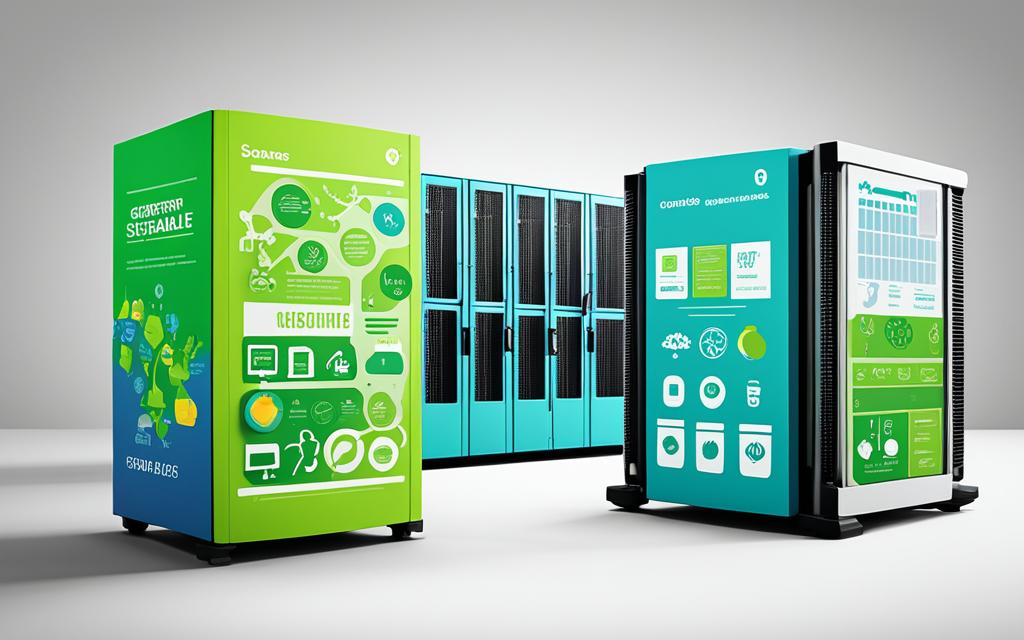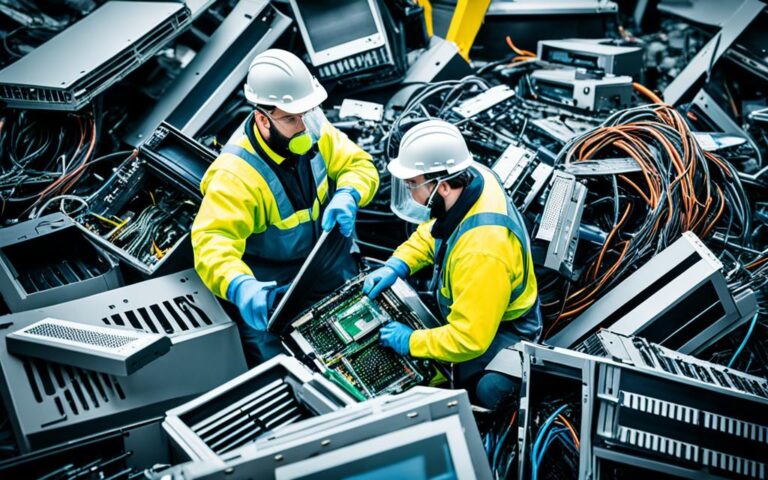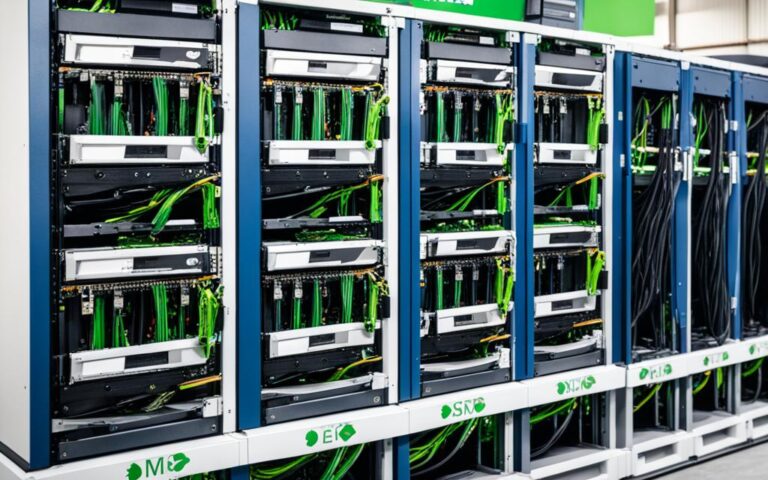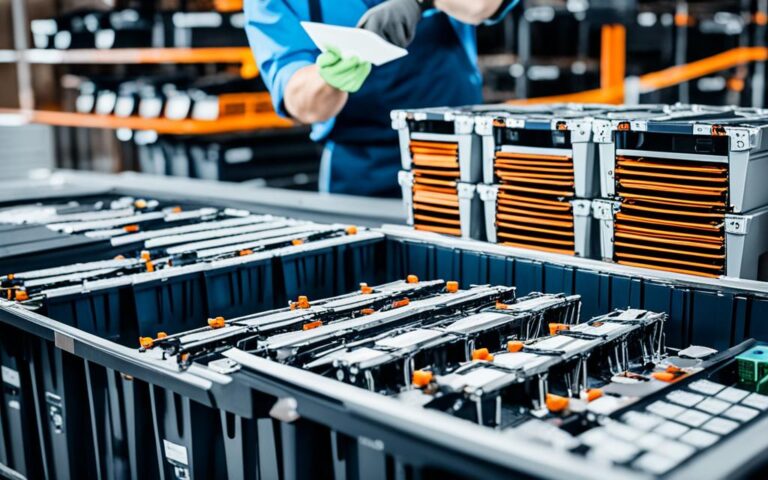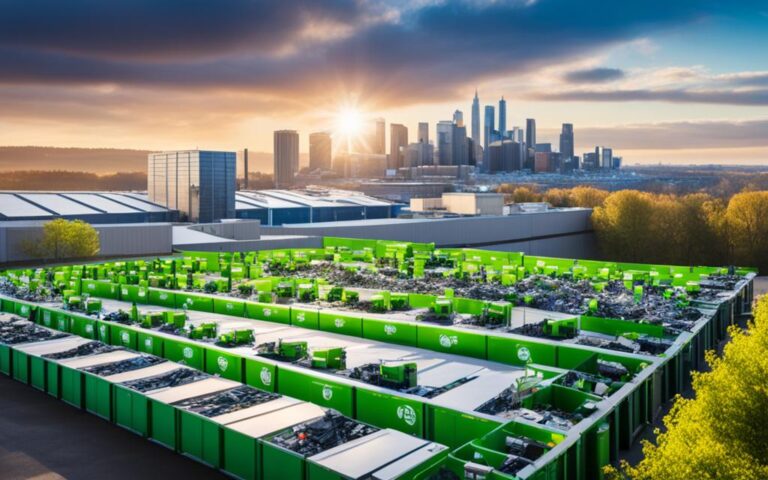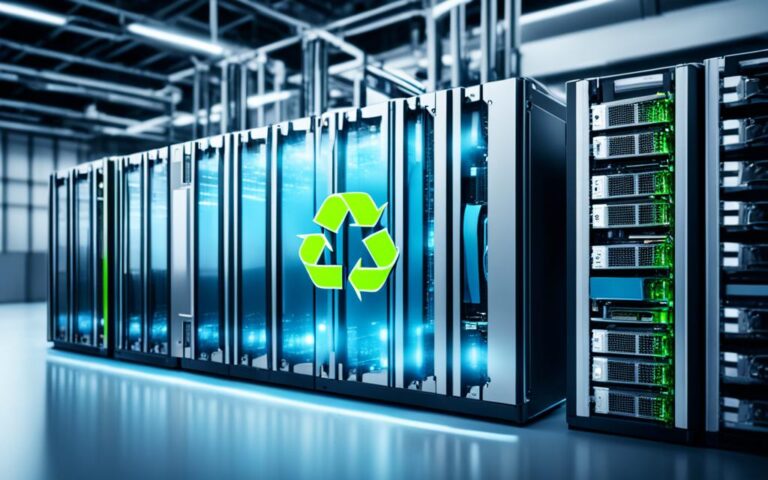The Role of Server Recycling in Data Center Decommissioning
In today’s fast-paced world, data centres are a crucial component of our digital infrastructure. However, as technology rapidly evolves, data centres must adapt and upgrade their equipment to stay competitive. This constant process of improvement leads to the inevitable decommissioning of servers. The question then arises: what happens to these retired servers?
Enter the world of data centre decommissioning and server recycling. This article explores the vital role of server recycling in sustainable data centre decommissioning and highlights the benefits of embracing environmentally responsible practices.
Server recycling goes beyond just disposing of old equipment. It involves reusing and repurposing server components to create a more sustainable future. Sims Lifecycle Services is at the forefront of this movement, offering comprehensive solutions for rack decommissioning, equipment resale, and responsible recycling. By refurbishing and harvesting parts, they maximize the value of retired servers and minimize electronic waste.
But why is server recycling so important? By recycling servers, we reduce the strain on our planet’s resources and minimize the environmental impact associated with electronic waste. The circular economy concept is at the heart of sustainable data centre decommissioning, ensuring that valuable resources are not wasted and that materials are reused as much as possible.
Join us as we delve into the lifecycle of data centre servers, explore sustainable practices for responsible disposal, discuss energy recovery and renewable solutions, and emphasize the significance of documentation and reporting in ensuring transparency and accountability.
Together, let’s pave the way for a greener and more sustainable approach to data centre decommissioning.
The Lifecycle of Data Center Servers
Data center servers play a crucial role in the storage and processing of vast amounts of digital information. Throughout their lifecycle, servers undergo various stages, including deployment, active operation, end of primary use, decommissioning, data clearing, and upgrade or replacement. Understanding the different phases of a server’s lifespan is essential for efficient data center management and optimization.
When it comes to decommissioning servers, organizations need to follow a structured process to ensure the secure removal and disposal of outdated or malfunctioning equipment. This decommissioning process involves taking servers offline, performing data clearing procedures to safeguard sensitive information, and physically removing them from racks.
Upgrade or replacement is another critical aspect of server management. To keep up with evolving technological advancements and enhance performance, organizations often need to upgrade their servers. This involves assessing the performance of existing servers, identifying areas that require improvement, selecting and installing new components, and conducting rigorous testing to ensure seamless integration and optimal functionality.
The diagram below illustrates the lifecycle of data center servers, from deployment to decommissioning and upgrade:
| Stage | Description |
|---|---|
| Deployment | The initial installation and configuration of servers in the data center environment. |
| Active Operation | The phase when servers are fully functional, processing and storing data in the data center. |
| End of Primary Use | The point where servers become outdated or no longer meet the organization’s operational requirements. |
| Decommissioning | The process of taking servers offline, performing data clearing procedures, and physically removing them from racks. |
| Upgrade/Replacement | The procedure of improving server performance by replacing components or replacing outdated servers with newer models. |
By understanding the lifecycle of data center servers and implementing efficient decommissioning and upgrade processes, organizations can ensure the smooth operation of their data centers, optimize performance, and reduce the risk of data breaches and system failures.
Sustainable Practices for Responsible Disposal
Before decommissioning a data centre, conducting an environmental assessment is crucial to identify potential hazards and develop sustainable strategies.
Prioritising recycling and reuse of components reduces electronic waste and extends their lifecycle.
Secure data destruction methods, such as physical destruction or data wiping, ensure data security.
Partnering with certified e-waste recyclers and waste management companies guarantees proper disposal of hazardous materials.
Here are some sustainable practices to consider:
- Conducting an environmental assessment before decommissioning
- Prioritising recycling and reuse of components
- Implementing secure data destruction methods
- Partnering with certified e-waste recyclers and waste management companies
“Recycling and reusing components not only reduces electronic waste, it also contributes to the circular economy and promotes sustainability.”
– Jane Green, Sustainability Specialist
Environmental Assessment
An environmental assessment is essential to evaluate the potential environmental impact of data centre decommissioning. It helps identify and mitigate risks to the environment and human health. By analyzing factors such as hazardous materials, energy consumption, and waste generation, organizations can develop sustainable strategies for responsible disposal.
Recycling and Reuse
Recycling and reusing components is a key practice for reducing electronic waste and extending the lifecycle of materials. By partnering with reputable recyclers and waste management companies, organizations can ensure that the recycling process is carried out in an environmentally responsible manner. This helps conserve valuable resources and minimizes the environmental footprint of data centre decommissioning.
Secure Data Destruction
Secure data destruction is crucial to protect sensitive information and maintain data security. Physical destruction methods, such as shredding or crushing, ensure complete data destruction. Alternatively, data wiping techniques can be used to securely erase data from storage devices. Implementing these methods guarantees that data cannot be recovered, safeguarding against potential data breaches.
Ensuring data security during decommissioning is vital to protect sensitive information and comply with data protection regulations.
Partnering with Certified Recyclers
Partnering with certified e-waste recyclers and waste management companies is essential for proper disposal of hazardous materials. These organizations have the expertise and infrastructure to handle electronic waste safely and in compliance with environmental regulations. By working with certified partners, organizations can be confident that their decommissioned data centre equipment is disposed of responsibly, reducing the environmental impact.
Energy Recovery and Renewable Solutions
Data centers consume a significant amount of energy, making it crucial to explore energy recovery options during decommissioning. Implementing sustainable practices not only reduces environmental impact but also promotes a greener and more sustainable approach to data center operations.
To minimize energy waste and maximize resource efficiency, salvaging and reusing equipment that can contribute to energy generation is key. This includes generators and Uninterruptible Power Supply (UPS) systems, which can be repurposed for energy recovery purposes rather than being discarded as electronic waste. By harnessing the power potential of these components, data centers can reduce their carbon footprint and contribute to a more sustainable energy landscape.
Furthermore, investing in renewable energy sources such as solar and wind power plays a vital role in offsetting energy consumption. By integrating renewable energy systems into data center operations, organizations can reduce their reliance on non-renewable resources and decrease their environmental impact. The adoption of renewable energy not only supports a sustainable future but also helps create a more resilient energy infrastructure.
Benefits of Energy Recovery and Renewable Solutions
Embracing energy recovery and renewable solutions offers numerous benefits, both environmental and economic:
- Reduced carbon footprint: By utilizing energy recovery options and investing in renewable energy, data centers can significantly reduce their greenhouse gas emissions and contribute to mitigating climate change.
- Cost savings: Incorporating energy recovery practices can lead to significant cost savings on energy bills, as data centers can generate their own power instead of relying solely on traditional grid sources.
- Positive public perception: Demonstrating a commitment to sustainable practices can enhance an organization’s reputation and attract environmentally conscious clients and partners.
- Long-term sustainability: By embracing renewable energy sources, data centers can ensure a long-term, sustainable approach to meeting their energy needs, reducing reliance on fossil fuels and non-renewable resources.
Overall, energy recovery and renewable solutions are essential components of a sustainable data center decommissioning strategy. By salvaging and repurposing energy-generating equipment and investing in renewable energy, data centers can maximize resource efficiency, reduce their environmental impact, and contribute to a more sustainable future.
| Benefits of Energy Recovery and Renewable Solutions |
|---|
| Reduced carbon footprint |
| Cost savings |
| Positive public perception |
| Long-term sustainability |
Documentation and Reporting
Accurate documentation and comprehensive reporting are essential aspects of data center decommissioning to ensure compliance, accountability, and demonstrate a commitment to sustainable practices. By recording relevant details throughout the process, organizations can effectively track progress and measure the environmental impact of their decommissioning efforts.
Documentation should include information such as waste volume, recycling methods, and carbon emissions offset, providing valuable insights into the sustainability practices implemented during the decommissioning process.
The Importance of Documentation
Documenting the decommissioning process serves multiple purposes. Firstly, it allows organizations to conform to regulatory requirements and demonstrate compliance with environmental standards. By keeping track of waste volumes and disposal methods, companies can ensure that they adhere to legal obligations and avoid any potential penalties.
Secondly, documentation enables organizations to be transparent and accountable for their actions. By maintaining detailed records of recycling methods, organizations can provide evidence of their commitment to responsible and sustainable practices, enhancing their reputation as environmentally conscious entities.
“The documentation process plays a critical role in data center decommissioning, offering insights into the environmental impact from waste management to recycling initiatives.”
Comprehensive Reporting for Sustainable Practices
Reporting is an integral part of sustainable data center decommissioning. It allows organizations to analyze and evaluate their environmental impact, identify areas for improvement, and communicate their progress to stakeholders.
The reporting process should encompass key metrics such as energy consumption, carbon emissions, and the percentage of equipment recycled or repurposed. By collating and analyzing this data, organizations can gain valuable insights into the effectiveness of their sustainable practices and make informed decisions for future decommissioning projects.
Sharing these reports with stakeholders, such as clients, investors, and regulatory bodies, demonstrates an organization’s commitment to environmental responsibility and drives further engagement in sustainable practices.
| Metrics | Description |
|---|---|
| Waste Volume | The quantity of waste generated during the decommissioning process, including electronic waste, materials, and packaging. |
| Recycling Methods | The specific processes and techniques used to recycle or repurpose decommissioned equipment and materials, emphasizing sustainability and minimizing environmental impact. |
| Carbon Emissions Offset | The reduction of carbon emissions achieved through sustainable practices, such as energy-efficient operations and the use of renewable energy sources. |
Conclusion
As the demand for sustainable solutions continues to grow, data center decommissioning plays a vital role in embracing environmentally responsible practices. By prioritizing recycling and reuse, organizations can contribute to a greener future while reducing the environmental impact of decommissioning. Secure data destruction methods ensure data security, while energy recovery and renewable solutions help offset energy consumption.
Thorough documentation and reporting are crucial in demonstrating commitment to sustainability. By tracking progress, waste volume, and carbon emissions offset, organizations can effectively measure their environmental impact and make informed decisions for a more sustainable data center decommissioning process. Together, these practices pave the way for a responsible disposal approach that not only benefits the environment but also aligns with the evolving needs of the industry.
By adopting sustainable data center decommissioning practices, we can not only minimize electronic waste but also create a more circular and sustainable economy. Responsible disposal is no longer just a choice; it is an imperative for organizations to ensure a healthier future. Let us continue to prioritize recycling, reuse, secure data destruction, and explore energy recovery options to lead the way in sustainable data center decommissioning.
FAQ
What is data center decommissioning?
Data center decommissioning refers to the process of taking servers offline, clearing data, and removing them from racks when they reach the end of their primary use or need to be upgraded or replaced.
What is the lifecycle of data center servers?
Data center servers go through several stages, including deployment, active operation, end of primary use, decommissioning, data clearing, and upgrade or replacement. Decommissioning involves taking servers offline, clearing data, and removing them from racks. Upgrade or replacement involves assessing server performance, selecting and installing new components, and rigorous testing.
Why is an environmental assessment important in data center decommissioning?
Conducting an environmental assessment before decommissioning a data center is crucial to identify potential hazards and develop sustainable strategies for recycling and reusing components, reducing electronic waste, and extending their lifecycle.
What are secure data destruction methods in data center decommissioning?
Secure data destruction methods in data center decommissioning include physical destruction or data wiping, which ensure data security and compliance with privacy regulations.
How can energy recovery and renewable solutions be implemented in data center decommissioning?
Energy recovery and renewable solutions can be implemented in data center decommissioning by salvaging and reusing equipment that can contribute to energy generation, such as generators or UPS systems. Additionally, investing in renewable energy sources like solar or wind power offsets energy consumption and promotes sustainability.
Why is documentation and reporting important in data center decommissioning?
Maintaining accurate documentation throughout the decommissioning process is vital for compliance and accountability. Recording details such as waste volume, recycling methods, and carbon emissions offset helps track progress and demonstrate commitment to sustainable practices.

